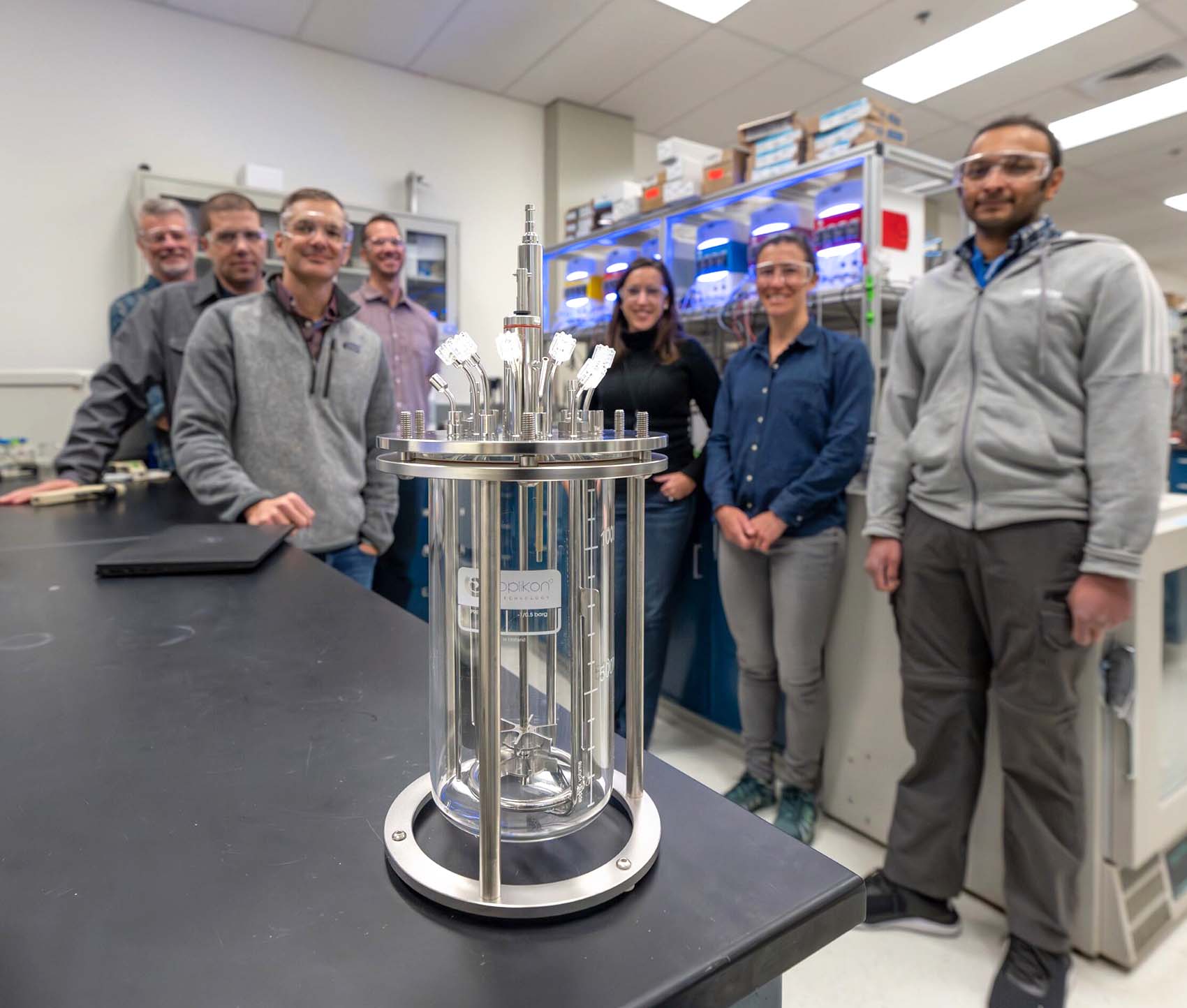Computational Applications for Energy Research
NLR's computational applications integrate applied mathematics techniques with high-performance computing to analyze, simulate, and derive insights and advance complex energy research.

Computational simulations of energy technologies enable rapid prototyping, design and process optimization, physical insights and discoveries, and reliability engineering. These capabilities enable rapid development and deployment of more reliable and affordable energy technologies.
Computational scientists are domain scientists using computers as their primary method of investigating scientific, engineering, and analysis problems. NLR experts in this space focus their research on:
- Techniques for efficient numerical solution of equations describing the evolution
of physical processes—crucial for understanding energy technologies (e.g., fluid flow,
chemical reactions, molecular dynamics, technoeconomic systems) often using high-performance
computing (HPC) systems
- Data-driven methods for developing high-speed and low-cost alternatives to direct
numerical solutions
- Application-oriented questions that can be solved using these models and simulations. Such questions include the design, optimization, and efficient operation of energy technologies.
Biofuels
NLR's computational research in biofuels delivers tools for the simulation of the full life cycle, including initial processing, chemical conversion, and end use.
BDEM: Discrete-Element Simulator for High-Solids Granular Flows (GitHub)
A discrete element method-based simulation tool for modeling high-solids granular
flows that include polydispersity, heat transfer, moving boundaries, and chemistry.
The solver provides facilities for simulating spherical/nonspherical particles with
modified contact and friction models in complex dynamic geometries defined using level-sets
or triangulated files.
Biomass Feedstock Conversion Interface Handling Computational Models
Simulating the handling and flowability of organic biomass feedstock in coupled feed
systems
Mesoflow: Mesoscale Modeling Tool for Biomass Pyrolysis and Catalytic Upgrading
AMReX-based code for catalytic upgrading and pyrolysis
Virtual Engineering of Biofuels Software
Pipeline of simulation capabilities—including
simulation of pretreatment, enzymatic hydrolysis, fermentation processes—for the conversion of biomass into second-generation biofuels
Mesoflow: Mesoscale Modeling Tool for Biomass Pyrolysis and Catalytic Upgrading
AMReX-based code for catalytic upgrading
and pyrolysis
Adaptive Computing Software
Framework for performing multi-fidelity modeling—including in support of
catalytic upgrading
FuelLib: Jet Fuel Library
Open-source, Python-based library that estimates the thermodynamic and transport
properties of hydrocarbon fuels
Aviation Fuels End Use
High-fidelity simulations of biofuels used
in aircraft engines to affect performance, fuel economy, and reliability
Pele Software Suite
NLR's research in combustion is enabled by Pele Software Suite's PeleC, a compressible
turbulent reacting flow solver.
Aviation Fuels End Use
High-fidelity simulations of biofuels used
in aircraft engines to affect performance, fuel economy, and reliability
Energy Storage
Computer simulations can quickly and affordably evaluate a new battery's lifecycle performance.
SPADES: Scalable Parallel Discrete Events Solvers
Discrete-event-based simulations of the degradation of Li-ion cells
Buildings, Industry, and Transportation
Technologies for extracting fresh water from higher salinity sources are an urgent need in regions with diminishing fresh-water resources.
Exagoop (GitHub)
An open-source material point method solver that efficiently simulates the dynamics
of highly deformable continuum phases
NMACFoam Software for Ultra-High-Pressure Reverse Osmosis Membrane and Module Design
and Optimization
Ultra high-pressure reverse osmosis process for water purification
Adaptive Computing Software
Framework for performing multi-fidelity modeling including machine-learning-based
electrical controllers that learn on the fly from simulations of the electrical demands
of communities of buildings
Event-driven simulations of vehicle traffic and mobility systems can help evaluate strategies to relieve congestion. See SPADES: Scalable Parallel Discrete Events Solvers.
Energy Generation
A prerequisite for accurate simulations of wind farms, atmospheric boundary layer
modeling can predict how much wind is available.
Exawind Software Suite
AmrWind AMReX-based solver for atmospheric flows, equipped with buoyancy modeling
and an efficient hierarchical mesh topology for boundary layer simulations
Energy Research and Forecasting Model
AMReX-based mesoscale atmospheric wind code accounting for compressibility effects,
terrain modeling, and atmosphere-ocean interactions
Wind-farm-scale simulations predict evolution of wind turbine wakes and how they affect the power production of the farm.
During design, farm-scale simulations can inform optimal siting of turbines to maximize power production. During operation, farm-scale simulations can inform how to rotate turbines and adjust blade angles to maximize power production and mitigate effect of wake on other turbines.
ExaWind Software Suite
AmrWind AMReX-based solver for atmospheric flows with turbine (actuator line and disk)
models
Simulations of halide perovskites to help discover better manufacturing techniques
Simulates wind loading and stability in solar-tracking PV systems
In blade-resolved simulations, higher fidelity simulations are achieved by directly simulating the moving geometry of the wind turbine. These simulations provide insights into the effect of the turbine blade design on the power production and structural loads on the blade.
Nalu-wind
Fully unstructured, Trilinos-based solver for blade-resolved wind problems, simulating
flows over complex, moving bodies. Part of the Exawind software suite (a composite
solver that uses the AMR-Wind solver for atmospheric boundary layers), Nalu-Wind solves
for the flow near wind turbines.
Wind Turbine Stall Modeling
Improved modeling of separated flows and airfoil stall
G2Aero Software: Aerodynamic Shape Parametrization Using Separable Shape Tensors
Data-driven framework uses a matrix manifold to parametrize a manifold of airfoil
shapes
Contacts
Group Manager, High-Performance Algorithms and Complex Fluids
Group Manager, Complex Systems Simulation and Optimization
Share
Last Updated Dec. 7, 2025
